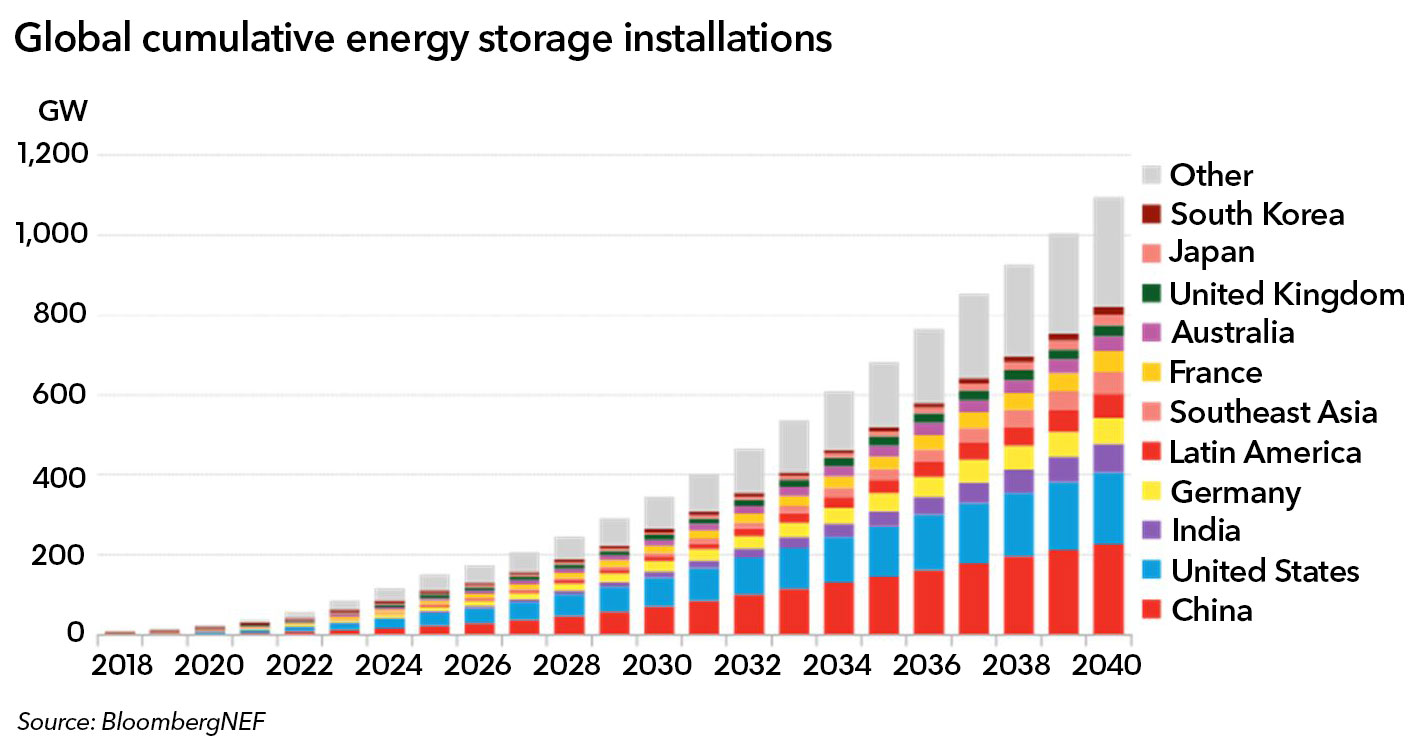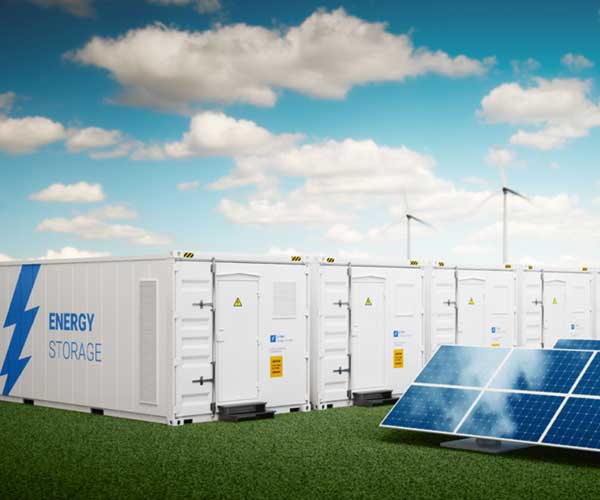Energy storage installations around the world will multiply exponentially, from a modest 9GW/17GWh deployed as of 2018 to 1,095GW/2,850GWh by 2040, according to the latest forecast from research company BloombergNEF (BNEF).
What Happened?
BNEF’s Energy Storage Outlook 2019, estimates that this 122-fold boom of stationary energy storage over the next two decades will require $662 billion of investment.
It will be made possible by further sharp declines in the cost of lithium-ion batteries, on top of an 85 percent reduction in the 2010-18 period.
The research firm predicts a further halving of lithium-ion battery costs per kilowatt-hour by 2030, as demand takes off in two different markets – stationary storage and electric vehicles.
Why It Matters
The report goes on to model the impact of this on a global electricity system increasingly penetrated by low-cost wind and solar.
Just 10 countries are on course to represent almost three-quarters of the global market in gigawatt terms, according to BNEF’s forecast.
South Korea is the lead market in 2019, but will soon cede that position, with China and the U.S. far in front by 2040. The remaining significant markets include India, Germany, Latin America, Southeast Asia, France, Australia, and the U.K.

Demand for storage will increase to balance the higher proportion of variable, renewable generation in the electricity system. Batteries will increasingly be chosen to manage this dynamic supply and demand mix.
The report finds that energy storage will become a practical alternative to new-build electricity generation or network reinforcement. Behind-the-meter storage will also increasingly be used to provide system services on top of customer applications.
The total demand for batteries from the stationary storage and electric transport sectors is forecast to be 4,584GWh by 2040, providing a major opportunity for battery makers and miners of component metals such as lithium, cobalt, and nickel.
















Comments